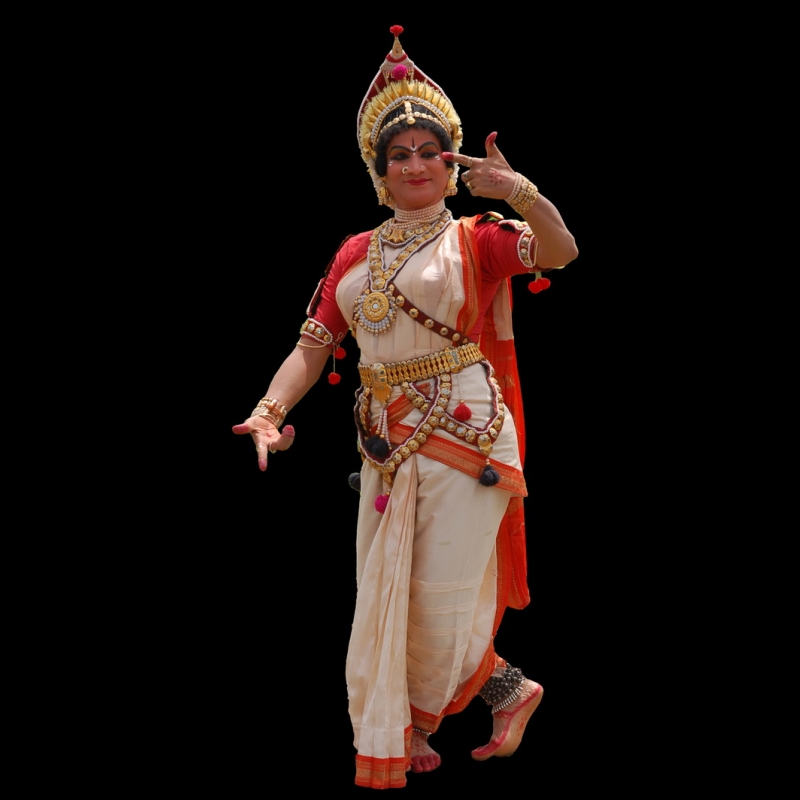Introduction by Dr Manorama B. N.
Mantapa is a popular name among the female role players in Yakshagana. He has performed on 1000 stages as a female impersonator. He did many commendable experiments in Yakshagana. Mantapa fulfilled the dream of Shatavadhani R. Ganesh by successfully conducting an experiment in the Indian aesthetics concept of rasa-dhwani-ouchitya. He started a new experiment in Yakshagana called ekavyakthi Yakshagana (solo show) that focussed especially on female roles.
He was born at Parampalli near Saaligrama in Udupi district. He entered the scene as a female role artist when female characters were not much in demand. He learned the art form at Yakshagana Study Centre in Udupi during 1975-76. He debuted with Kamalashile troupe lead by Keremane Shambhu Hegade. At the time, Keremane troupe used to stage limited-time shows. Later he continued his career with Perdur and Idugunji troupes and started performing as the lead female role. But then he decided to change track and went to Bangalore to become an entrepreneur. For ten years he ran a successful ice cream business. 'Mantapa' ice cream became very popular.
But he could not resist the temptation of Yakshagana for long. He started to perform again. He served as a guest female role artist in Bachchagaaru troupe of the famous artist Chittani Ramachandra Hegade from 1990 to 1993. The pair of Chittani and Mantapa became very popular among the audience. Mantapa’s performance in the roles of Mohini, Vijayashree, Chitrakshi and Menake were appreciated greatly and became very popular.
Though Mantapa wanted to play diverse characters, the audience wanted to see him only in romantic characters like Mohini, Menake, etc. His popularity was because of his physical traits, dance movements and acting skills. Feeling increasingly dissatisfied he began to shift his focus to his business. But wanting to keep on touch with dance, he learned Bharatanatyam from Manjula Paramesh. But later he realised that it would not suit his personality. For the next four years he kept himself away from Yakshagana.
During the programme of Kavya Chitra-Yaksha Nruthya, Mantapa met Shatavadhani R. Ganesh. A well-known scholar and multi-linguist, R. Ganesh had already formed the concept of ekavyakthi Yakshagana and he found a talented artist to realise his idea in Mantapa.
Mantapa learned chaari and nrutthahasta (body and hand movements) sourced from Natya Shastra from Sundari Santhanam, disciple of Padma Subrahmanyam, and modified it for Yakshagana. These modifications that he brought in made a considerable effect in the enactment of female characters.
Other than ekavyakthi Yakshagana, he has staged several duet shows like Vijaya Vilasa (Kondadakuli Ramachandra Hegade and Mantapa Prabhakara Upadhyaya), Hamsa Sandesha (Mantapa Prabhakara Upadhyaya and Sundari Santhanam), combination of Kuchipudi and Yakshagana Vijaya Vilasa (Veena Murthi Vijay and Mantapa Prabhakara Upadhyaya), combination of Bharatanritya and Yakshagana’s Murutida Maithri (Dr Shobha Shashikumar and Mantapa Upadhyaya). These shows became very popular. Moha Menake written by Diwakar Hegade is his recent experiment.
He has extended the scope of female characters through his experiments. He organises a cultural programme once a month at his residence, Mantapa Gruha. Even though he is past the usual retirement age for female impersonator, he doesn’t shy away from new experiments. Sometimes he also performs as a guest artiste for professional troupes.
Alva Education Trust brought out a commemorative volume Abhinandana Grantha to mark the achievements of Mantapa Upadhyaya. He received numerous awards like Rasabhava Kalanidhi, Yaksha Rasa Rushi, Shrikrishna Anugraha, Kalaputra Ratna, Yaksha Tapaswi, Yaksha Kala Ratna, Natya Bhaskara, Natya Ratnakara, Samsruthi Sinchana, Karavali Ratna, etc.
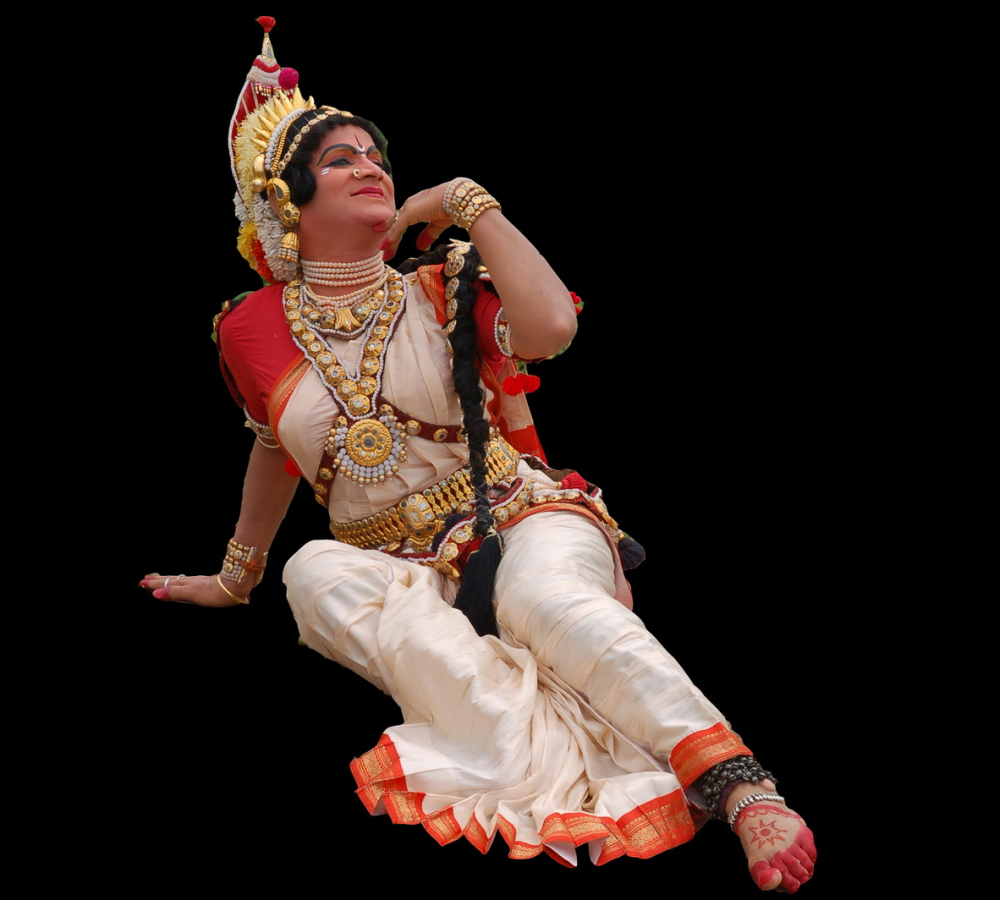
Following is the transcript of an interview Yakshagana artist and scholar Manorama B.N. conducted with Mantapa Prabhakar Upadhyay.
Manorama B.N.: Could you talk about the role Yakshagana played in your life?
Mantapa Prabhakhar Upadhyay: During my childhood days Yakshagana was the only medium of entertainment for us. In the middle of the night we used to follow the sound of maddale to watch Yakshagana. And sometimes we got lost in the darkness. This interest led me to Yakshagana later in life.
At the age of 18, I started my career as a Yakshagana artiste. In order to fulfil my dream and also to compensate for my incomplete education, I trained in Yakshagana. After my training, I joined a well-known Keremane troupe which is known as one of the best troupes for acting, costume and makeup. For a few years I served as an artiste in this professional troupe. Then I realised that one couldn’t possibly survive solely through Yakshagana. Thus I launched my own business. But I felt an emptiness in life and realised the need of an art form to complete my life.
Thus, again I came back to Yakshagana. To gain happiness in life one needs an art form. Thus for the sake of my pleasure I took up dance again. I became a celebrity through Yakshagana. I realised during this journey that just costumes or dance or acting or even dialogues alone cannot make an artiste completely happy. But I couldn’t figure out how to achieve complete happiness. On one occasion I chanced to meet intellectuals like Shathavadhani R. Ganesh and the wonderful painter B.K.S. Varma. And they brought a new ray of hope in my life.
M.B.N.: It was this meeting that encouraged you to conceive the concept of ekavyakthi Yakshagana (solo Yakshagana), right?
M.P.U.: Yes, it was a chance meeting. I raised questions and Ganesh gave answers. The concept of ekavyakthi Yakshagana was his brainchild. I discussed my confusions and concerns with them (R. Ganesh and B.K.S. Varma) in our meeting. I asked them, ‘I want to play a female role without any age restrictions. Age should not never be a hurdle to playing any character’. Ganesh explained the entire philosophy of art to me. I felt that he was explaining my own experience. Then I recognised my weak areas. The path forward was then clear to me. Thus this talk cleared my confusions and made me resolute to achieve my goal.
If we have interest and strength, we can perform female roles at any age. Age won’t be a barrier. But for that we have to climb certain steps. They are chitra-nrutta-nruthya-natya-abhinaya-bhava-rasa. You should reach the level of rasa. Reaching that level means you can perform a female role without age limitation. When the artiste reach the level of rasa then he will become the character. Then he will be accepted. During one such occasion Ganesh suggested to me to perform ekavyakthi. I started staging Bhamini in 1999.
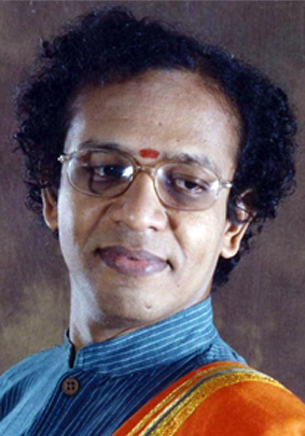
M.B.N.: Was it difficult for you to learn ekavyakthi Yakshagana? How did it occupy you?
M.P.U.: The ekavyakthi Yakshagana form was created to widen the scope of female roles in Yakshagana. Yakshagana is not my occupation and I don’t expect anything from it. I run own business to earn my livelihood. If I take Yakshagana as my occupation then I have to cater to the rules. But as I am earning my livelihood from other sources, I have only artistic interest in performing Yakshagana.
The female artiste’s age is a negligible factor for someone who enjoys Bhamini in the aspect of rasa. It doesn’t mean that we can reach everything immediately. But it will be possible when we mount certain heights. Earlier I had several confusions in my mind. At the time when female artists performed, the audience would take a break. They would get up and go to the chowki or green room to meet the other artists or go and have tea. So I thought that introducing a play dominated by a female character was risky. According to me it was impossible to perform Yakshagana without the cooperation of a male character. Initially, while performing I would feel the absence of other characters. But now I don’t feel it. I have continued with my experiments on stage and my confidence has grown.
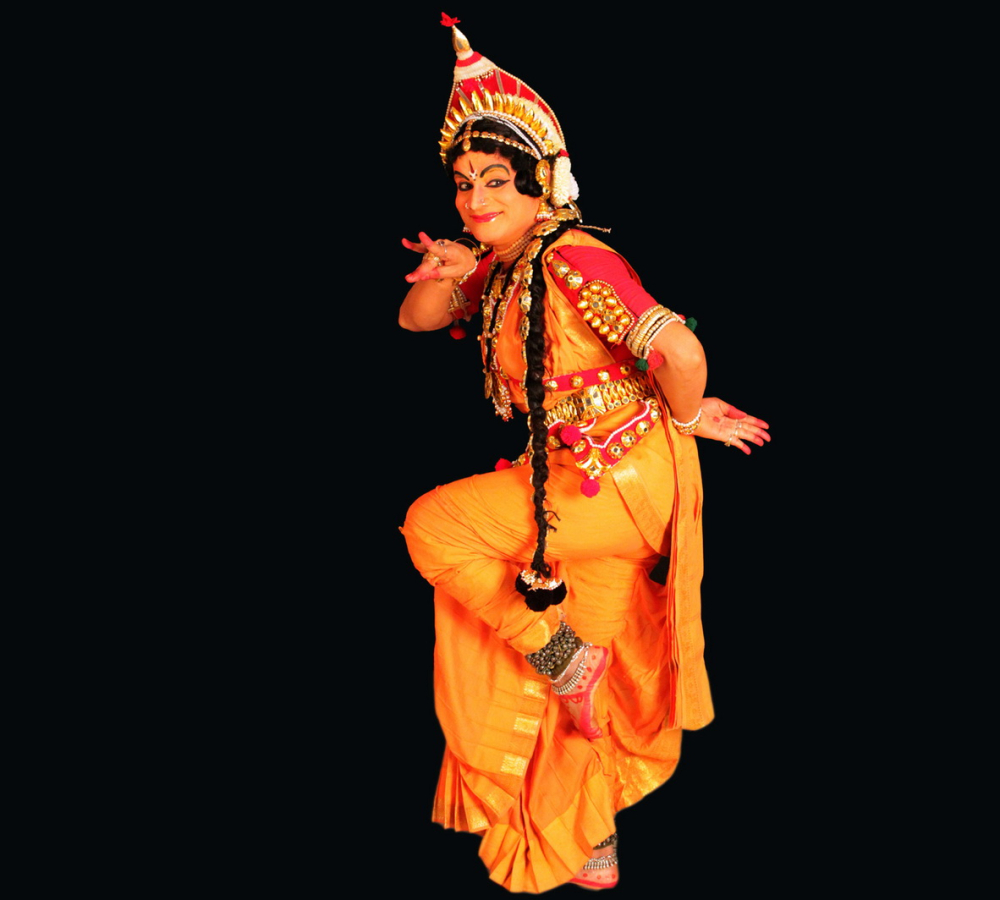
M.B.N.: Had anyone experimented with ekavyakthi Yakshagana before you did? If so, what were the differences you have brought to it?
M.P.U.: In 1955, G.R. Pandeshwara wrote a solo Yakshagana prasanga called Maaravathara. But no one performed it on stage. Udyavara Madhava Aacharya’s Panchaali and Sanjeeva Suvarna’s experiments used to take place on stage. Ganesh’s concept of ekavyakthi Yakshagana was unique in nature. Instead of basing the concept in traditional forms such as literature, paintings, nruttha (dance), nrithya (dance along with acting), he shaped it with the concept based on philosophy of art i.e., natya-bhava-rasa and dominated by rasa.
We made a few modifications to the basic form of Yakshagana. Instead of making one individual perform all the characters, all the (absent) characters will be reflected in the reactions of the artist. This provides freedom and chance to showcase the talent of an artist.
Ganesh was behind all these experiments and after every show he would give inputs and suggestions. He taught me to distinguish between bhava and rasa. He told me to dance for myself and not for others. If we feel happy through our dancing, then the others also will feel the same.
M.B.N.: Could you elaborate on the part the himmela (supporting music team) plays in your experiment?
M.P.U.: They too were influenced by the rasa theory. Vidwan Ganapathi Bhat started to enjoy the rasa in singing. Phatak controlled and managed the whole stage through his mridanga. Krishna Yaji is excellent in playing chende and we introduced it even in streevesha. I thank my himmela team greatly for the success of the show. Flute artiste H. S. Venugopal, singers Kanchana Shreeranji and Shruthi Ranjini played on violin. The costume designing is left to Rajashekhara Hande. Due to his support I can change costumes fast. I attribute this success to the himmela team. Thanks to the nadumane (performance at residences) experiment, we have been able to do 1400 performances so far.
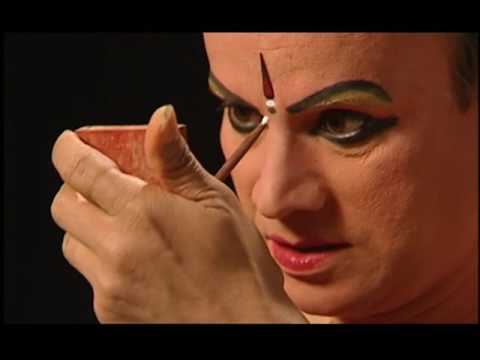
M.B.N.: It seems among your experiments it is nadumane that touched you a lot. Can you please share a few interesting moments from your nadumane performances?
I like performing ekavyakthi in residences. The first experiment of ekavyakthi, i.e. Bhamini has been staged in nadumane of Shirashi at Bhairumbe in 2000. It is very simple and only the family members gather to watch the show. Here no one will force them to sit and watch the performance. There is no need of large arrangements and it is less expensive. Here we start the show on time. We ask them to switch off their mobile phone sets and calling bells. Sometimes even the neighbours will be unaware about the performance next door. This type of shows won’t get publicity or media coverage.
These home-based performances helped us to win the hearts of people. Through this they begin to respect both the artiste and the art. This attempt to minimise the gap between the artiste and the audience and builds a good relationship. That should be the purpose of an art form.
Let me quote one instance to explain the involvement of audience in home-based performances. In one of the shows I performed both Yashodha’s and Krishna’s role. In one of the scenes, I had to enact Yashodha locking Krishna up in a room and I locked one of the rooms in the house. After four or five days, the members of that house came to me with tears of joy and bliss in their eyes. They said, 'You locked Krishna in one of our rooms. We have not opened it till now as we feel that if we do so Krishna may run away.’
It was, of course, their imagination. But it shows that they have enjoyed the show and also, their involvement in it. Their experience is not an illusion.
M.B.N.: Can the same success be repeated on big platforms?
M.P.U.: Big stage means arrangements like microphone, light, etc. Problems may crop up at any moment. Also, big stages won’t suit ekavyakthi Yakshagana. As an artiste I may get emotional satisfaction from my performance, but I don’t think the audience would also feel the same.
M.B.N.: But doesn’t a small audience dampen the enthusiasm of the artists and their performance?
M.P.U.: The number of people in the audience is not as important as their interest in the art. I am ready to perform before even a single person. But he should be a sahrudaya or a connoisseur.
Less audience only reflects the disinterest in the programme. We shouldn’t expect mass attendance. Only the interested should attend a public performance. If an artiste is ready to perform even in the absence of an audience, it means the art form has taken strong roots in him.
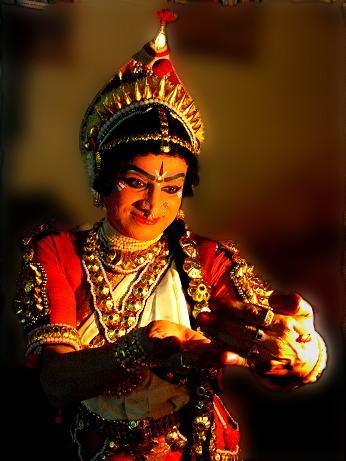
M.B.N.: What has the experiences of ekavyakthi performances taught you?
M.P.U.: Dance is an important aspect of ekavyakthi Yakshagana. For me dance is more important than its form. I don’t follow any style or tradition in my performance. Dance is beyond styles. It is perfect and sacred. A shift can be noticed from time to time. But rules of art won’t change with the passing time.
What is the point in reproducing the same performance you learned from the guru? We should bring diversity in our performance. In ekavyakthi Yakshagana, the emphasis will be on acting, and the whole situation will be narrated during the performance. This is more effective. Sometimes overusage of props may have an adverse effect on the art form. Limited use of the props can showcase the real art. Nature of art will be completely different when acting takes place without any supporting props. Performing becomes very challenging then.
M.B.N.: Some argue that ekavyakthi Yakshagana is dominated by Bharatanatyam and there are no similarities to Yakshagana. What do you say about it?
M.P.U.: No dance forms have influenced ekavyakthi Yakshagana. It takes its inspiration from the Natya Shashtra. There is a general belief that Natya Shashtra is only for Bharatanatyam. This thought is prevalent among Yakshagana teachers and artistes. If we observe Bharatanatyam keenly, we are able to notice how the artists are moving away from the Natya Shasthra text.
A Bharatanatyam performance is also basically a solo show. But during the performance the artiste plays the role of different characters. Unlike Bharatanatyam, the actor will play only one role in ekvayakhti Yakshagana. In Ekavyakthi Yakshagana, the performer makes us feel the presence of other characters. For instance, if we stage Shoorpanakha Prasanga, the main character will express the physical features of other characters through his or her emotions. Other characters will be sketched through the expressions of the performer and also the explanations. The concept of ekavyakthi Yakshagana concept is borrowed from Yakshagana and is presented with required modifications.
M.B.N.: What do you say to the sceptics who say that ekavyakthi Yakshagana is short-lived?
M.P.U.: Yakshagana has seen drastic changes over the years. 25 years ago it was not performed like it is performed now. So we can’t decidedly say that ekavyakthi is short-lived. Things change from one generation to the next as each generation would keep learning new aspects.
We can’t say that the old generation was intelligent and the new generation is useless. With every generation people learn new things.
M.B.N.: Have you thought about the future of ekavyakthi Yakshagana? Do you have your own group of disciples?
M.P.U.: I don’t believe in it. I don’t have any disciples and don’t intend to have also. My daughters have learnt this art form but they have taken up different careers. I am not saying I should be the only person doing ekavyakthi Yakshagana. Artistees choose one or other form of art and try to excel in it. Innovative artistees bring in new experiments.
However, styles may change, but art will survive one way or the other.
Dr Mohan Alva of Alva’s Education Trust persuaded me to teach ekavyakthi Yakshagana for the interested students in their institute. And I taught them both ekavyakthi and bahuvyakthi (performance by many) dance forms. Mohan Alva has tremendous love towards all forms of art and he has great organising ability. I am grateful to him. Thus every year I go there and teach Yakshagana for aspirant students. Group dance forms in Yakshagana has brought in a freshness. Choreographies like Chandabhama, Dashavathara, Raasleela, Vasantha Vaibhava, Madhumasa and Pattabhisheka require 30 to 50 performers and requires a big stage.
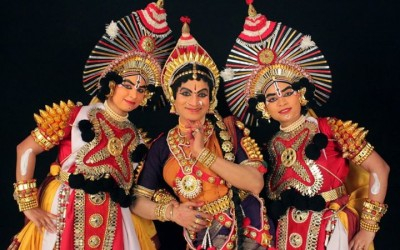
M.B.N.: Could you briefly point out the reasons for the success of ekayakthi Yakshagana?
M.P.U.: According to me the reasons can be these: Ganesh’s direction, his perspectives and encouragement, dancing for my own pleasure, the idea of creating other characters through reactions, excellent himmela team, our discipline, shows at residences, less number of instruments, and time-bound shows.
There may be more reasons for the success behind the ekavyakthi show. Timely suggestions of well-wishers also helped us to make improvements. Our success itself will be a fitting answer to all the oppositions and prejudiced comments that we received. For instance, in the beginning we were even criticized for the way we wore sari on stage. But later it has been adopted by all.
Overall, we can say confidently that we have done our duty to Yakshagana. We took up new experiments to give a new structure to Yakshagana and have managed to put them up on stage successfully.
M.B.N.: How can an artist be sure that he can provide entertainment to his audience?
M.P.U.: One should follow the art form of one’s own interest. As an artist he should draw inspiration from the basic texts and then grow beyond it. If an artist is talented, then he can bring innovations in his performance. Education and knowledge are different. One should utilise his education to enhance the knowledge.
But most of the dancers just blindly follow their teachers. They will be upset if they miss any step on stage. It should not be like that. One should be able to dance to any form of music and rhythm. The dancer should stick to the basic form but at the same time should try to develop it further to achieve his goals.
M.B.N.: How do artists from different art forms regard each other?
M.P.U.: You will be surprised. Most of the Bharatanatyam artists don’t watch Yakshagana. They say that it would spoil their style. But every form of dance has its own beauty. We can’t make fun of any form of dance.
M.B.N.: What is the role of the audience in a performance?
M.P.U.: In a performance, the audience is more important than the artiste. Artist will gain happiness from the performance. But the same may or may not happen in the case of audience. A connoisseur will come with the hope of gaining rasa but sometime he may not get it. The artist should try to take the audience to a higher level and forget their selves. Then the audience will gain rasa.
M.B.N.: Do you have any suggestions for young Yakshagana students?
M.P.U.: Interest in learning is very important. Teachers should teach them various possibilities of dance. But look at what is happening today. Teachers collect huge sum of fee from the students for a stage show. Performing the dance before the public is becoming a prestigious issue. Makeup, costume preparations and competition have become more important.

M.B.N.: How does an artist perceive the three vows of veda, loka and adhyathma?
M.P.U.: I believe that performing is a very spiritual experience. We should overcome our egos to generate rasa in our performance. Only our hard work will see us through this time. If we do not improve on what we learned we won’t be able to generate rasa in our performances.
Shatavadhani taught me how to overcome my ego and encouraged to enjoy the performance.
Most of the artists want publicity. But he should grow gradually and should give up his ego and then only he will grow further in his career. Growth of an artist stagnates when an artist thinks that art is there to express his ego.
M.B.N.: Should artists retire?
M.P.U.: We can stop performing when we reach the age of retirement. But why should we stop dancing for ourselves? Keeping the age factor in mind we can reduce the number of public shows, but not our private performances. We can perform in a place where we like and in front of a handful of connoisseurs. Then there will be no question of retirement. But we should have enough stuff in us. We should be confident enough to perform without our costumes. We may not dance but our acting should fill that blankness. Age should not become a factor to stop our performance. Both the artiste and the audience should forget themselves while watching the performance, then everything will be possible.
M.B.N.: What do you think does the future of Yakshagana hold?
M.P.U.: Yakshagana has a great capacity to modify. We can’t run our show relying only on presenting old stuff. We should adopt changes according to the times. But no one including the artists, no one is ready to accept the changes.
